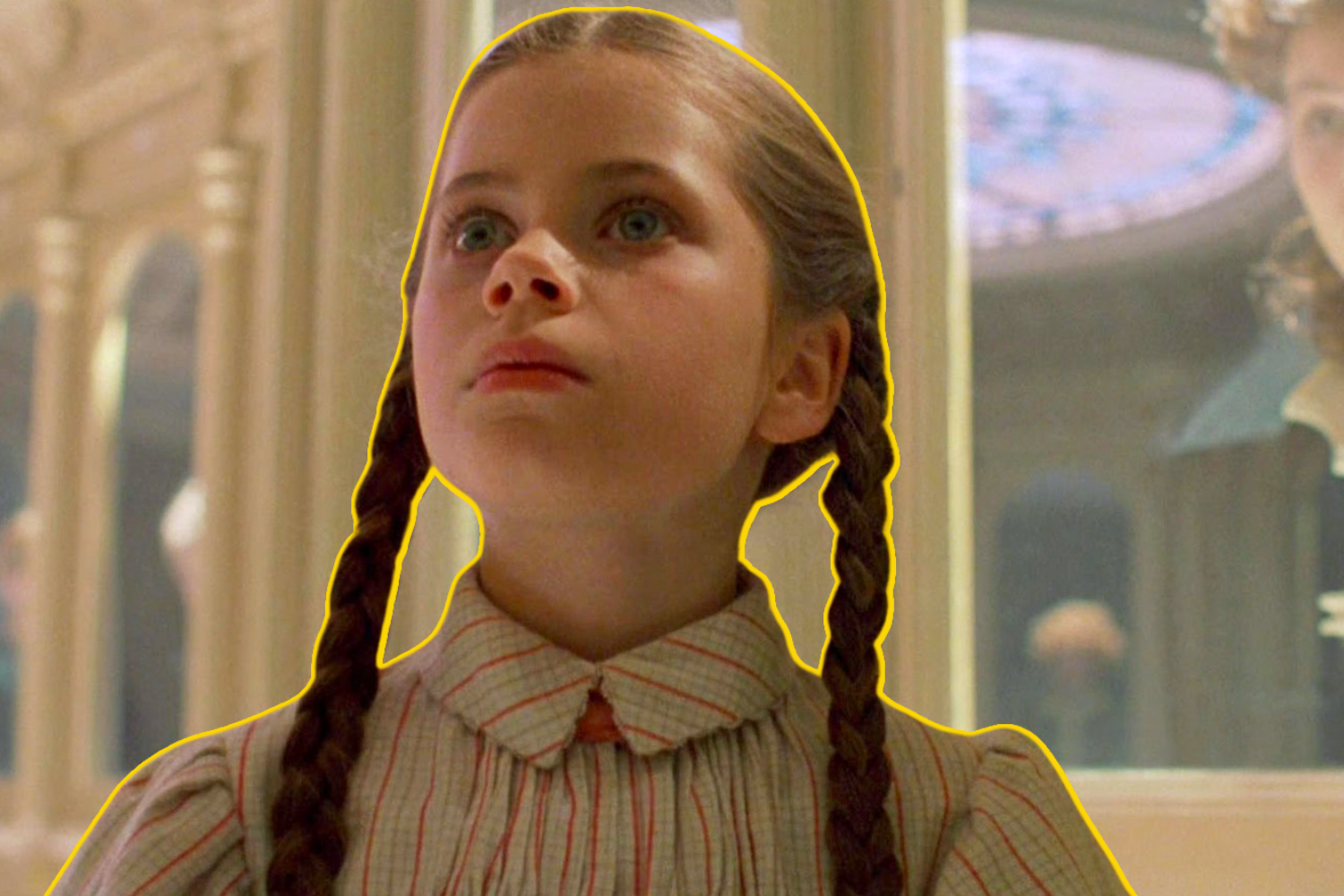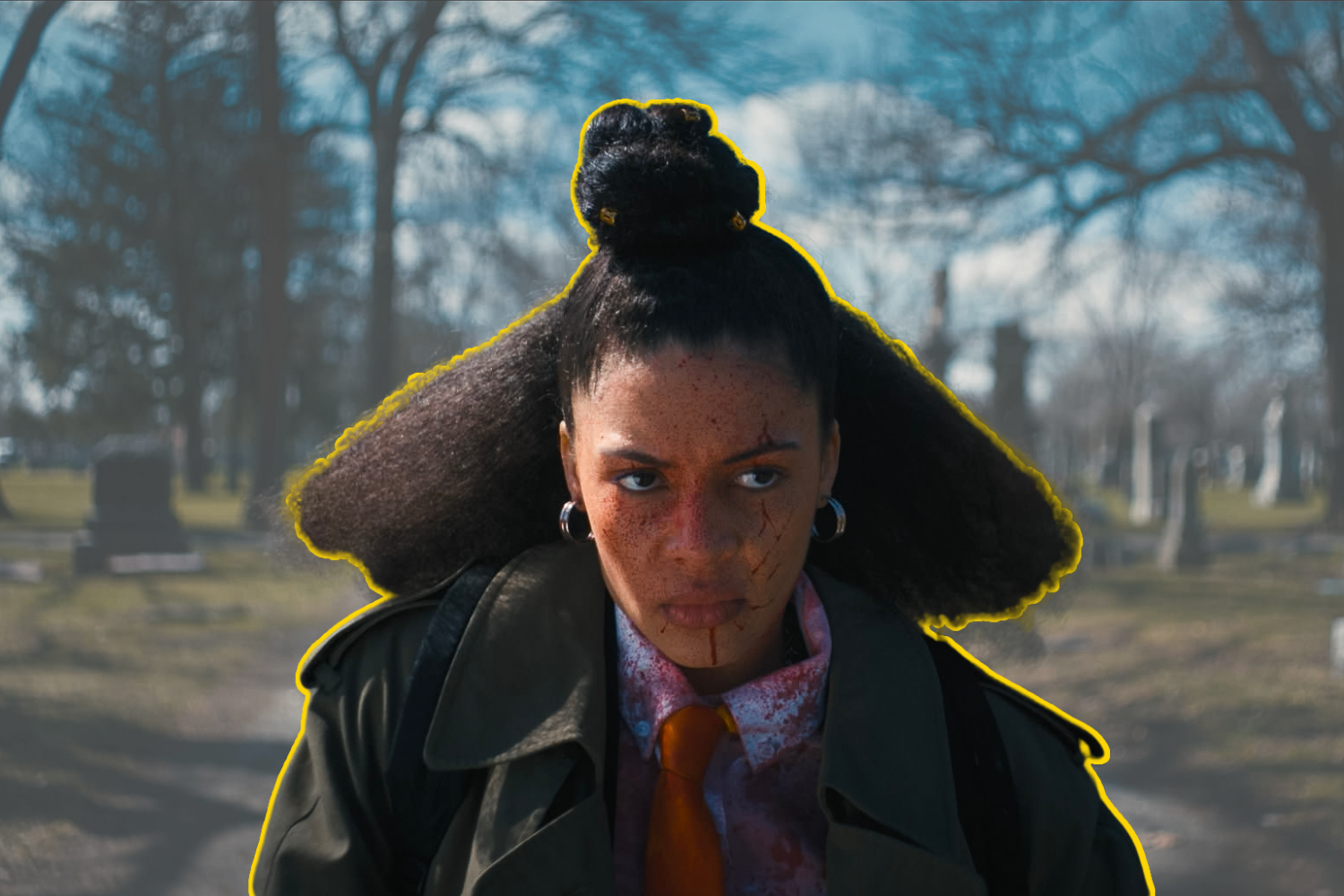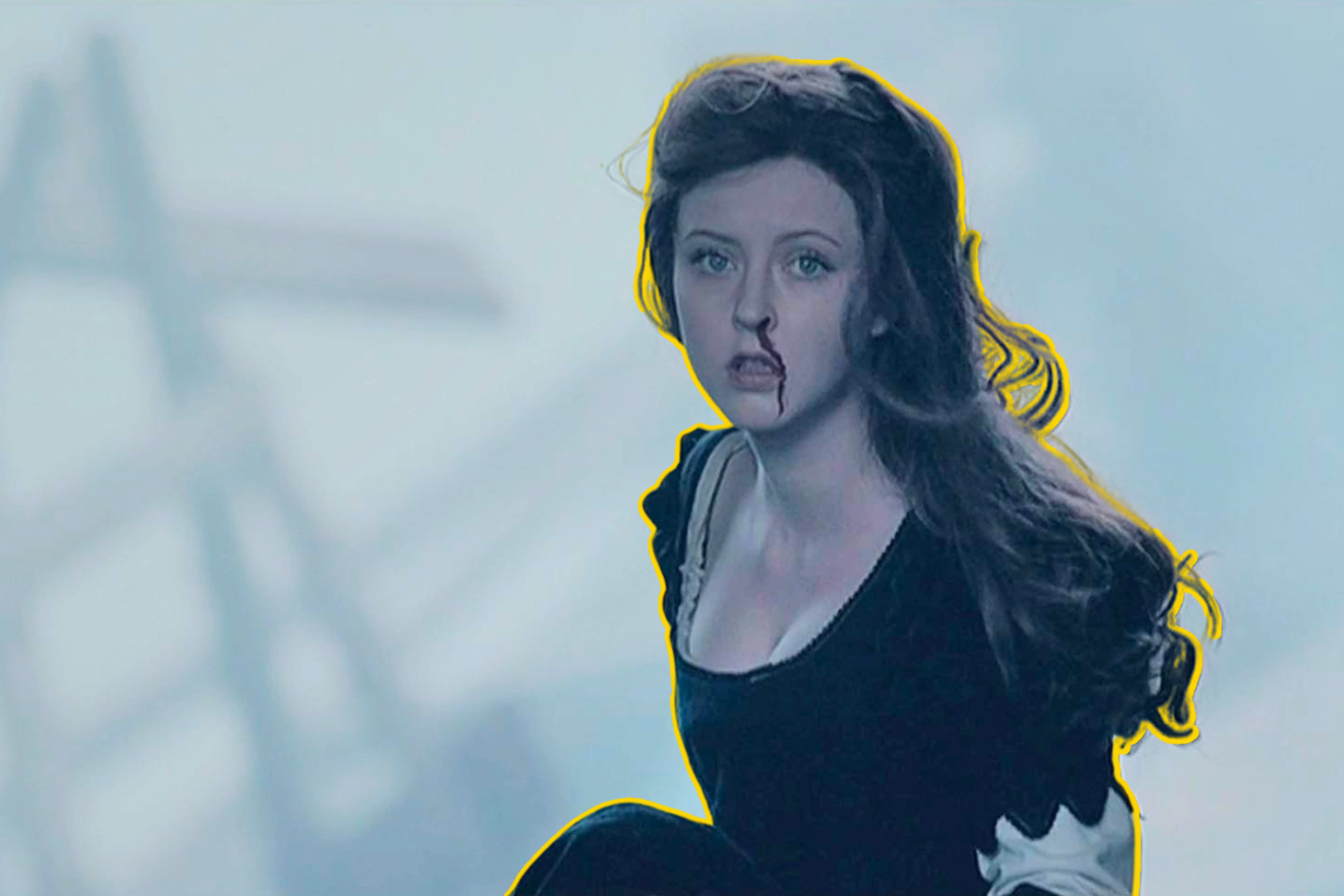Editorials
‘Return To Oz’ Still Breeds Adolescent Horrors
Uterus Horror is a subgenre of films that focuses on the experience of growing up with a female gender expression. These films capture the act of becoming an adult and coming into your sexuality, using horror to emphasize and/or act as a metaphor for those experiences. Columnist Molly Henery, who named and defined the subgenre, tackles a new film each month and analyzes how it fits into this bloody new corner of horror.
February 2nd, 2024 | By Molly Henery

January 2024 marks the second year I’ve used my birthday month as a bargaining chip to convince my amazing Certified Forgotten editors to let me write about a childhood favorite. Last year, I wrote about Labyrinth and how Sarah’s journey is one of self-discovery as she comes to terms with her sexuality, becoming more responsible, and growing up. While it is very much a Uterus Horror story, it certainly lacks a bit in the horror department. This year, I chose a film that has very similar themes but leans more heavily into the terrifying imagery. That’s right, we’re talking about the 1985 cult classic Return to Oz.
Become a Free Member on Patreon to Receive Our Weekly Newsletter
Inspired by the L. Frank Baum novels, Return to Oz is an unofficial sequel to 1939’s The Wizard of Oz and again follows young Dorothy Gale (Fairuza Balk). Directed by Walter Murch (Star Wars: The Clone Wars), who also co-wrote the screenplay with Gill Dennis (Walk the Line), the film takes place in 1899, seemingly within a year or so of the events of The Wizard of Oz. Audiences are reintroduced to Dorothy in a time of transition and uncertainty. A new century is approaching, her uncle is having a difficult time rebuilding their home after the tornado, and Dorothy is haunted by her memories of Oz. She’s not getting much sleep, and it’s taking a toll on Dorothy’s chores. This makes her useless to Aunt Em (Piper Laurie), just like the hen, Billina (voiced by Denise Bryer), who won’t lay any eggs. The solution? Aunt Em takes Dorothy to see a psychiatrist with a trendy new way to supposedly fix peoples’ brains called electrotherapy.
At the hospital, Dorothy meets the two adults in charge, Nurse Wilson (Jean Marsh) and Dr. Worley (Nicol Williamson). Nurse Wilson is a very severe-looking woman with a stern demeanor. Dr. Worley, though he speaks in a soothing and kind tone, also appears to have sinister intentions. The only brightness in this strange place is a nameless young girl (Emma Ridley) who befriends Dorothy. As Dorothy is taken away for her procedure, a storm rages outside. Just as the doctor is about to shock her, the power goes out, and all the staff go to fix the issue and tend to the other mental patients. The mystery girl appears, freeing Dorothy from her restraints and helping her escape the hospital down a flooding river. When Dorothy awakens the next morning, she finds herself once again in the land of Oz. This time, she’s accompanied by Billina, who, of course, can talk in Oz.
At this point in Dorothy’s journey, it’s clear she is trying desperately to hold on to her childhood. She’s fixated on Oz and her memories of the fantasy land, shirking her responsibilities and refusing to move on. While some might simply say she’s lazy and doesn’t want to work on the family farm, there are early clues to what’s really going on. Throughout the film, there is a common theme in how adult women are portrayed. Namely, all of the adult women are shown only having two uses: they’re either mothers or subservient to more powerful men. Dorothy is from rural Kansas, so she’s had limited exposure to other women. She knows her Aunt Em, a strict yet kind woman who works hard to keep the farm running; while she was forced into motherhood by taking Dorothy in, she seems to have accepted it in stride. Billina, although she’s a chicken, is only on the farm to lay eggs. Since she hasn’t been able to do that, Aunt Em sees the hen as useless for not serving her purpose, and if you’re not serving your purpose, then you’re off the farm.
Between the women in Dorothy’s life and the expectations of women in 1899, Dorothy’s fear is quite clear. She’s afraid of motherhood. She clings to her memories of a land of fantasy and adventure because she doesn’t want to face her reality. In her mind, growing up means getting rid of the things you love just to gain more responsibility, get married, and have babies.
This trip to Oz is different. The yellow brick road is in disarray, the Emerald City is in shambles, and all the inhabitants of Oz have been turned to stone. Dorothy desperately searches for the king of Oz and her friend, the Scarecrow, only to find both the Cowardly Lion and the Tin Man frozen in place. Not long after arriving, Dorothy and Billina are chased by menacing creatures called Wheelers. When she finds a safe place to hide, she meets Tik-Tok (voiced by Sean Barrett), a metal man who acts as the royal army of Oz. A powerful and capable character in his own right, Tik-Tok still needs someone to wind up his gears in order to think, talk, and move, something Dorothy happily does for him. Tik-Tok fights off the evil wheelers, taking one prisoner and demanding he take them to whoever is now in charge.
The current ruler of the Emerald City is a glamorous woman called Princess Mombi. Her initial beauty quickly shatters when she reveals a closet with spots for 31 different beautiful heads, each a different one Mombi can wear (although her original head is also Jean Marsh). Mombi decides to lock Dorothy in the tower to let her age a few more years before Mombi takes her head for her collection. Mombi is a powerful witch, but she serves the Nome King (Nicol Williamson again), who is the one responsible for conquering Oz. Both Nurse Wilson and Princess Mombi represent what Dorothy believes is the only other option for adult women. They are beautiful, clothed in fine things, and have a lot of power, but because they are unwed and childless, they are also selfish and cruel. The only place for these women is at the right hand of even more powerful men. This is a fate she might fear even more than growing up to become a mother.
What Dorothy doesn’t realize is that she easily takes on the role of mother with her new friends in Oz. It’s first seen when she meets Tik-Tok and takes on the task of making sure his gears are properly wound, a responsibility she’s not always the best at. Then, when Mombi locks her in the tower, Dorothy meets Jack Pumpkinhead (voiced by Brian Henson), a scarecrow-like character created by a woman trying to scare Mombi. Jack calls Dorothy Mom at first, mistaking her for the woman who created him, and he later asks Dorothy if he can call her Mom anyway, to which she agrees. Jack was brought to life with a spell using the “powder of life.” In one of the most traumatizing scenes, Dorothy sneaks into the closet containing Mombi’s original head in order to steal the powder for their escape plan. Again, Dorothy unwittingly becomes a mother by using the powder to give life to a creature made of random items from the tower, including two sofas, large leaves for wings, and the head of a mythical moose-like animal called a gump. It’s up to Dorothy, Billina, and Dorothy’s three new surrogate children to fly to the Nome King’s mountain, defeat him, and restore the Emerald City to its former glory.
The climax and final moments of Return to Oz reveal things to help alleviate Dorothy’s fear of motherhood. First, when it seems all hope is lost and Dorothy is about to perish with her friends at the hand of the Nome King, Billina finally lays her egg, and it falls into the Nome King’s mouth. A simple thing to us, but chicken eggs are poison to nomes. By finally fulfilling her purpose, Billina saves the day, and Dorothy uses the re-discovered ruby slippers to wish everything in Oz back to normal. The Emerald City is once again beautiful and shiny and filled with all manner of creatures. Everyone celebrates Dorothy and asks her to be the new queen of Oz, essentially becoming everyone’s mother.
When Dorothy refuses, finally realizing she needs to go back home to face her responsibilities, she glimpses the mystery girl from the hospital in a mirror. Dorothy frees the girl from the mirror, where Mombi had imprisoned her, and it’s revealed the girl is Ozma, the rightful ruler of Oz and the woman who created Jack Pumpkinhead. Order restored in Oz, Ozma returns Dorothy home with the stipulation she will check in on Dorothy in case she ever decides to come back to Oz. Dorothy returns home, happily reunited with her aunt and uncle.
With a villain named Mombi, Return to Oz isn’t afraid to show how fearful Dorothy is of motherhood. The word “mom” is in the evil witch’s name! Introducing the mystery girl as Ozma, whose name contains “Oz” and “Ma” indicating she is the mother of Oz, reveals the shift in Dorothy’s mind. She’s no longer afraid of what growing up means for a girl entering the 20th century. Dorothy understands she can make motherhood what she wants, the way Ozma has. She will take on more responsibility, including being responsible for other lives, but it doesn’t mean she has to give up her imagination and sense of whimsy. Being a mother is far better than the alternative of being a sinister spinster, such as Nurse Wilson/Princess Mombi, both women locked up for their crimes.
Return to Oz is a fascinating piece of Uterus Horror targeted at younger audiences. By today’s standards, the message sent to young girls that motherhood is the only alternative to being an evil old maid is severely outdated. Even compared to Labyrinth, which came out only one year after Return to Oz, it seems archaic. Both films depict a girl approaching adulthood going to a fantasy land where they are faced with their fears of responsibilities and growing up. Yet where Labyrinth also has the protagonist grapple with her budding sexuality, Return to Oz skips that part and goes straight to motherhood. Considering when Baum wrote the Oz books, and the time period the film is set in, that old-fashioned sensibility does make sense. Yet, just like in Labyrinth, the most important message in Return to Oz is that growing up doesn’t mean giving up the things you love. It simply means finding a balance between what makes you happy and all the responsibilities that come with being an adult.



